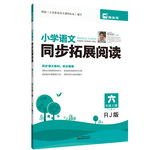题目内容
This important lesson by Professor Wang teaches primary students how to ______ themselves from danger.
| A.pretend | B.prevent | C.prepare | D.protect |
D
解析试题分析:考查动词辨析:A. pretend假装B. prevent阻止C. prepare准备D. protect保护,句意:王教授教的重要的课教小学生怎么保护自己免受危险。protect sb from sth保护某人免受…,选D。
考点:考查动词词义辨析
点评:动词的词义辨析要放在上下文的语境中进行,要注意上下文的语义的串联以及逻辑关系的推理,特别要注意一些动词的固定搭配以及动词的深层次的含义的区别。这题的几个单词属于形似的单词,要区别词义。有时考查的是其中一个动词的词组。

 同步拓展阅读系列答案
同步拓展阅读系列答案补全对话
根据对话内容,从对话后的选项中选出能填入空白处的最佳选项。选项中有两项为
多余选项。(T:Teacher;S:Student)
T:AS you know,the audio-visual(视听的)educational method is a modern way of teaching. 1
S: 2 It helps foreign language learners learn faster and better.
T: 3 Every Wednesday afternoon is the time you use them.From 2∶00 to 5∶00,I'll be here with you.You may choose whatever machine you like.But remember,you must learn how to use it properly before you begin to operate it.
S: 4
T:You have to pay the damages only if you damage it deliberately(故意地).
S: 5 Otherwise we dare not touch them!
|
A.Thank goodness! B.What's the aim of this method? C.You are right. D.What's the advantage of this method? E.Do we have to pay for the loss if we damage anything? F.Bad luck. G.It's a very impor tant tool in modem education. |